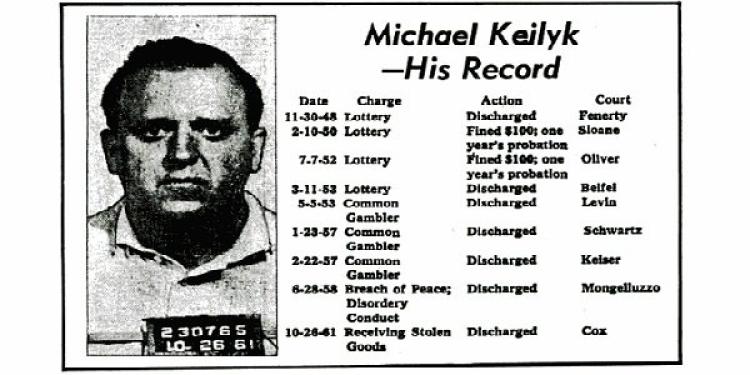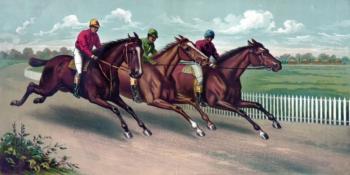A Gambling Tale that Hooked The Pulitzer Prize for Local Investigative Specialized Reporting
Posted: April 14, 2015
Updated: October 6, 2017

James V. Magee and Albert V. Gaudiosi, reporters, and Frederick Meyer, photographer, of The Philadelphia Bulletin won the Pulitzer Prize for local investigative reporting in 1964.
Ever wondered what kind of a US gambling news was spread way back in the 20s? Well we did some investigating of our own and found out that a few Pulitzer Prize winners had written winning articles about gambling. Let’s see what gambling tale Albert Gaudiosi and his comrades spun to have them win a Pulitzer prize in 1964. The category that caught the prize was the Local Investigative Specialized Reporting.
Albert V. Gaudiosi became an investigative reporter, in the early 1960s, with the Philadelphia Bulletin. The Philadelphia Bulletin was a daily evening newspaper published between 1847 and 1982 in Philadelphia, Pennsylvania. For 76 years, the newspaper was the largest circulating newspaper in Philadelphia and at one point was the largest evening newspaper in the U.S.
The Bulletin trio recorded and photographed illegal gambling
Along with James V. Magee and photographer Frederick A. Meyer, in 1963, Gaudiosi worked to produce their Pulitzer winning expose. The articles confounded a South Philadelphia gambling racket operation that took place with the knowledge of the police, who were paid to keep their mouths shut.
Magee himself worked on quite a few of the investigative stories that were launched by Earl Selby, who was the city editor at the time. The Pulitzer he shared came on one of those Selby-inspired investigations. The trio used camera and notebook to record the operations of a major betting operation in South Philadelphia.
They recorded the work of undercover agents who infiltrated the gambling ring, which was declared by US gambling laws to be illegal if the operators were not in possession of a gambling stamp. Six weeks after the infiltration started, federal agents raided the operation and the Bulletin published a dramatic series of articles and photographs.
Undercover agents uncover unlawful gambling ring
Let’s have a peep into the series of articles written. The undercover agents were part of the Internal Revenue Service. They placed bets with a well-known mob in Philadelphia. The bets amounting to $1, $2, $5 and $6 per wager were placed with the help of three gang members. This was done on street corners, outside a beer joint and not far from a pub and a barber shop.
In one of the articles, one of the agents is described as stopping his car near one of the drop-off areas of the gang. Then the agent was able to pick up on his car radio the gambling chat between the illegal book keeper and the IRA. The Bulletin observed that 4 people would place bets in a 15 minute period. Some of the scenes were photographed and placed in the papers during 4 days.
And in what would subsequently become the material from which many mafia movies would be made, the raid came. It was on a Saturday. Arrests were made. The charges included Lottery and Common Gambler. The bandits with racketeering as they had failed to buy the $50 government gambling stamp needed to gamble legally.
The day Gaudiosi lost his love for betting on horses
Following this local investigative specialized reporting, 15 police officers were suspended and nine were dismissed. The police district in which the operation was located was completely re-shuffled. A year later, in 1964, the two reporters and photographer received the coveted Pulitzer Prize.
Mr. Gaudiosi loved betting on horses. He admitted that he spent all his money on horse-racing. One day Gaudiosi was at the tracks in Atlantic City, in 1971, a few years after gambling was legalized there. The filly he had bet on jumped the inside fence. mobile betting sites report she then headed straight into a lake and drowned. Gaudiosi stopped gambling on horses right then and there.












